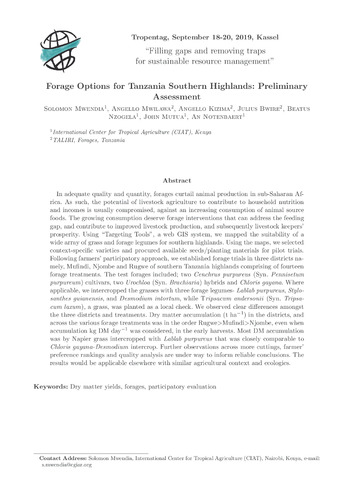Forage Options for Tanzania Southern Highlands: Preliminary assessment
In adequate quality and quantity, forages curtail animal production in sub-Saharan Africa. As such, the potential of livestock agriculture to contribute to household nutrition and incomes is usually compromised, against an increasing consumption of animal source foods. The growing consumption deserve forage interventions that can address the feeding gap, and contribute to improved livestock production, and subsequently livestock keepers’ prosperity. Using “Targeting Tools”, a web GIS system, we mapped the suitability of a wide array of grass and forage legumes for southern highlands. Using the maps, we selected context-specific varieties and procured available seeds/planting materials for pilot trials. Following farmers’ participatory approach, we established forage trials in three districts namely, Mufindi, Njombe and Rugwe of southern Tanzania highlands comprising of fourteen forage treatments. The test forages included; two Cenchrus purpureus (Syn. Pennisetum purpureum) cultivars, two Urochloa (Syn. Brachiaria) hybrids and Chloris gayana. Where applicable, we intercropped the grasses with three forage legumes- Lablab purpureus, Stylosanthes guianensis, and Desmodium intortum, while Tripsacum andersonii (Syn. Tripsacum laxum), a grass, was planted as a local check. We observed clear differences amongst the three districts and treatments. Dry matter accumulation (t ha−1) in the districts, and across the various forage treatments was in the order Rugwe>Mufindi>Njombe, even when accumulation kg DM day−1 was considered, in the early harvests. Most DM accumulation was by Napier grass intercropped with Lablab purpureus that was closely comparable to Chloris gayana-Desmodium intercrop. Further observations across more cuttings, farmer’ preference rankings and quality analysis are under way to inform reliable conclusions. The results would be applicable elsewhere with similar agricultural context and ecologies.

